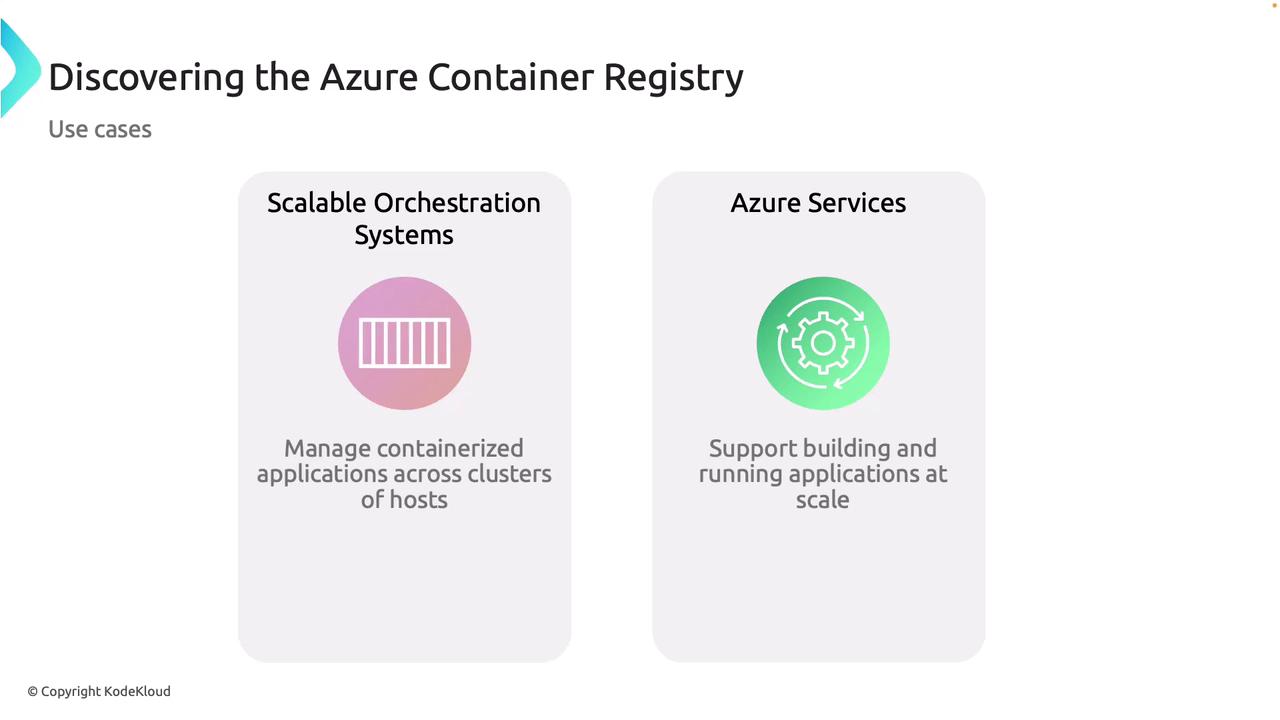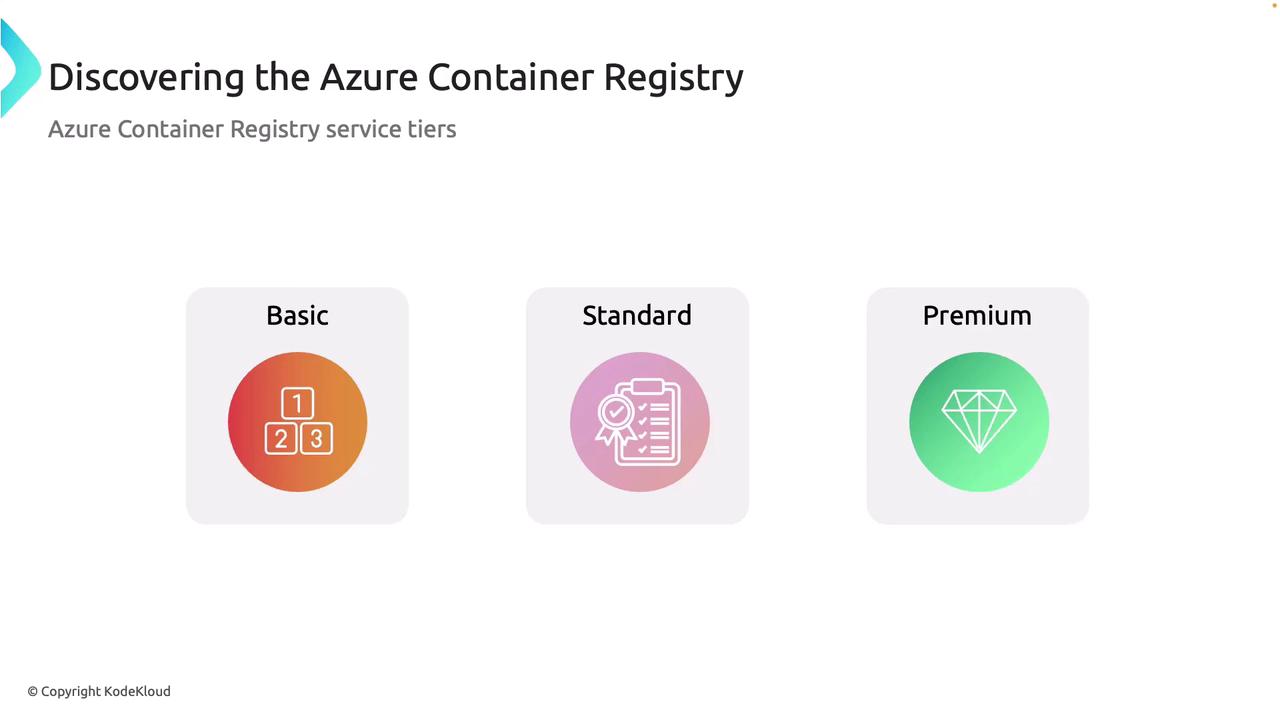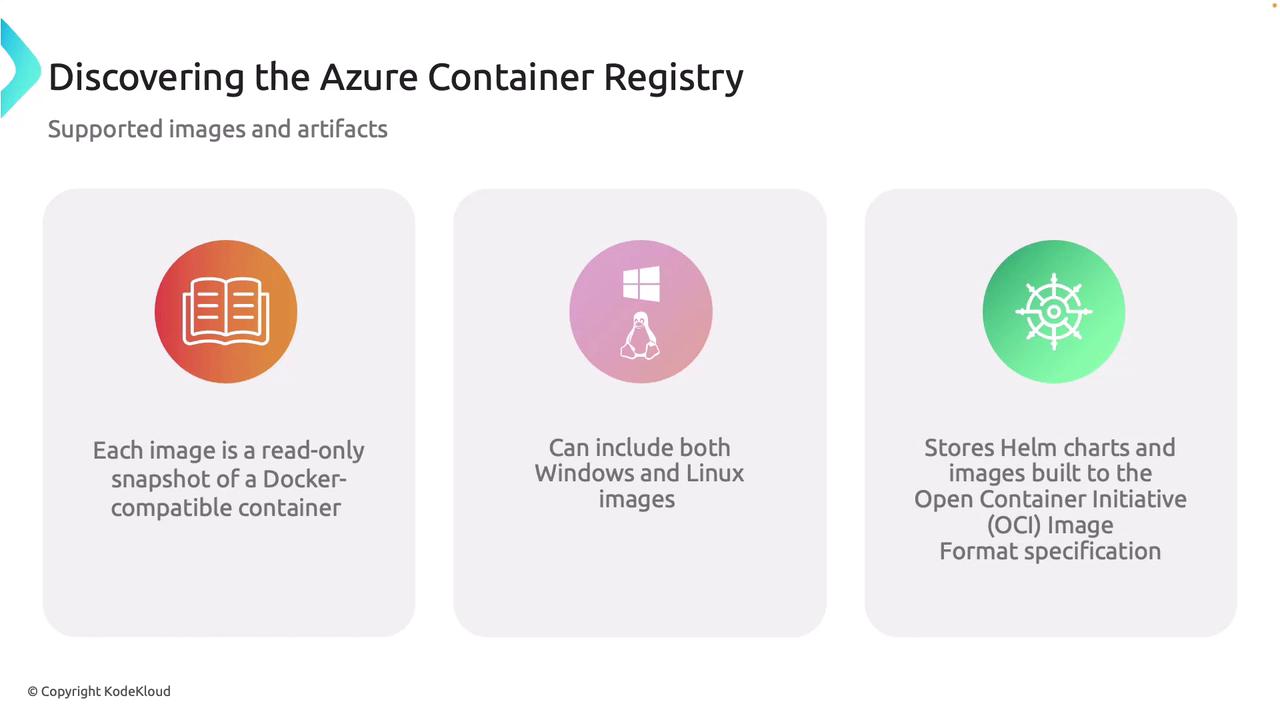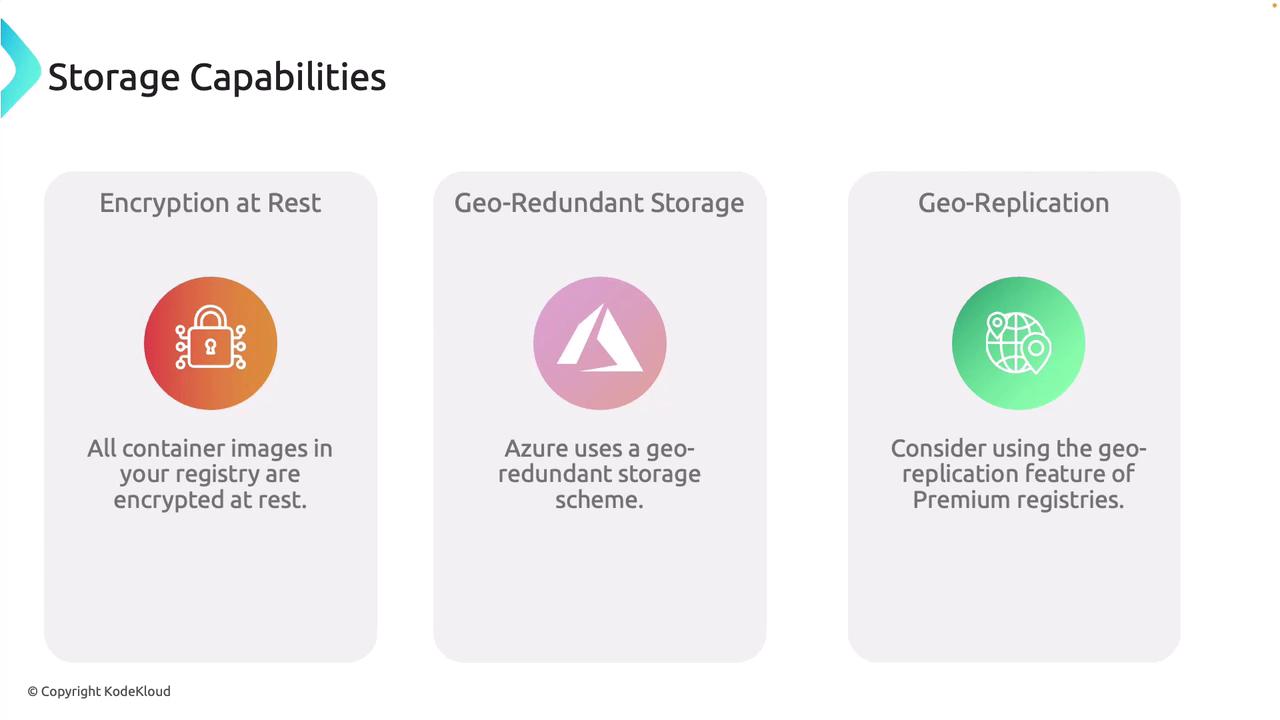AZ-204: Developing Solutions for Microsoft Azure
Managing Container Images in Azure Container Registry
Discovering Azure Container Registry
Azure Container Registry (ACR) is a fully managed Docker registry that allows you to securely store and manage container images for both Azure deployments and other environments. It caters to a wide range of scenarios, from small-scale containerized applications to large-scale enterprise solutions.
In this lesson, you'll learn about ACR's key use cases, service tiers, supported artifact types, and robust storage capabilities.
Key Use Cases
Scalable Orchestration Systems
ACR seamlessly integrates with scalable orchestration platforms like Azure Kubernetes Service and Azure Container Apps. These systems manage containerized applications across clusters, enabling efficient scaling and workload distribution. This integration simplifies the management of high container volumes in dynamic environments.
Integration with Azure Services
Deeply integrated with various Azure services, ACR is perfect for automating DevOps workflows and deploying containerized applications across multiple regions. Its tight integration within the Azure ecosystem streamlines operations, making it an excellent choice for enterprises leveraging cloud-native solutions.

These use cases illustrate the flexibility and strength of Azure Container Registry for a wide range of deployment scenarios—from managing container orchestration systems to integrating with broader Azure services.
Service Tiers
ACR offers multiple service tiers designed to accommodate different needs, ranging from development and testing to high-demand production environments.
Basic Tier
The Basic tier is targeted primarily at development and testing environments. It delivers a cost-effective solution with limited storage and throughput, ideal for small-scale operations or early-stage projects.
Standard Tier
Designed for production workloads, the Standard tier provides enhanced performance and more storage capacity. It fits mid-sized teams and organizations needing reliable performance, though it lacks some of the advanced features available in the Premium tier.
Premium Tier
For high-demand environments, the Premium tier offers advanced features such as geo-replication. This ensures rapid, reliable access to container images across different regions, making it suitable for global deployments where performance and redundancy are critical.

Selecting the right service tier allows you to align ACR's capabilities with your project requirements, whether you're in development, running production workloads, or managing large-scale deployments.
Supported Image Types and Artifacts
Azure Container Registry supports a variety of image types and artifacts, ensuring versatility in managing different workloads. Key formats and features include:
- Immutable Image Snapshots: Images are stored as read-only snapshots, providing consistency during deployments and ensuring reliable rollouts.
- Cross-Platform Support: ACR supports both Linux and Windows container images, making it suitable for diverse development teams.
- Helm Charts: Manage Kubernetes applications efficiently with Helm charts stored directly in ACR.
- OCI Compliance: ACR adheres to Open Container Initiative (OCI) standards, ensuring interoperability with other tools and platforms.

These features ensure that you have a versatile and fully compliant platform for managing a wide variety of container workloads.
Storage Capabilities
ACR not only stores container images but also guarantees that they are secure and available when needed. Its key storage capabilities include:
- Encryption at Rest: All images are encrypted while stored, protecting your data from unauthorized access.
- Geo-Redundant Storage: Container images are replicated across multiple regions using Azure's geo-redundant storage, enhancing availability and ensuring reliability during regional outages.
- Geo-Replication in Premium Tier: With the Premium tier, ACR supports geo-replication, reducing latency for global teams and ensuring high availability for rapid deployments.

These robust storage capabilities make sure that your container images are secure and readily available whenever and wherever they are needed.
Next Steps: Exploring Dockerfile Elements
Now that you have a comprehensive understanding of the benefits, use cases, service tiers, supported formats, and storage capabilities of Azure Container Registry, it's time to dive deeper into Dockerfile fundamentals. In the next part of our lesson, we will walk you through the elements of a Dockerfile and explain how to build container images and push them to ACR.
Note
Stay tuned for our upcoming sections where we explore the practical aspects of Dockerfile syntax and usage, ensuring smooth container image management with ACR.
Happy learning!
Watch Video
Watch video content